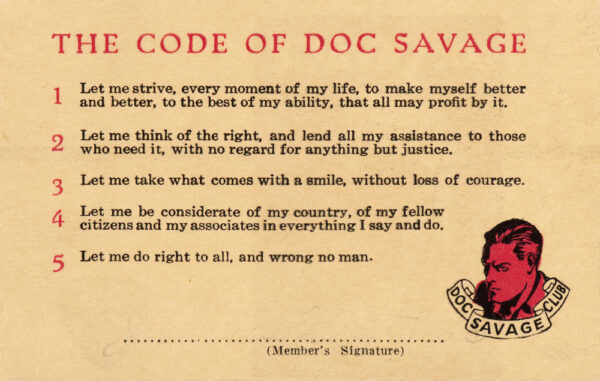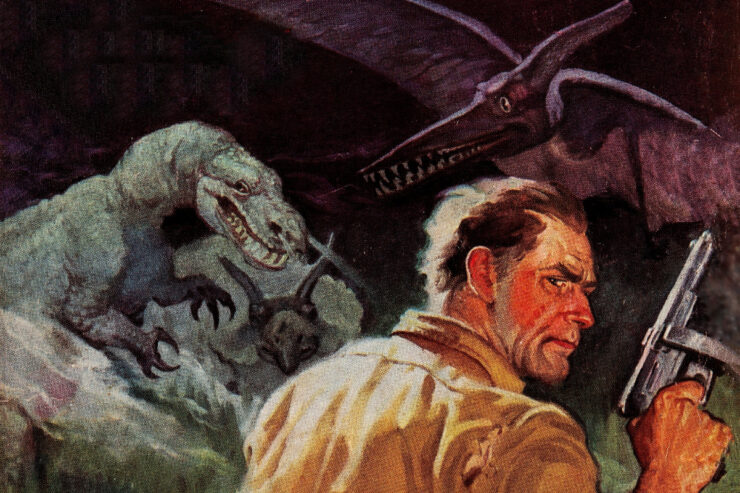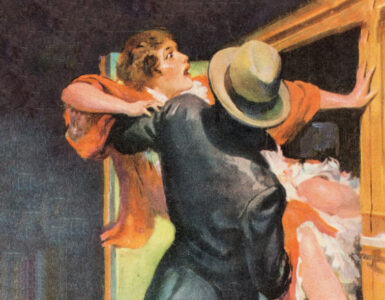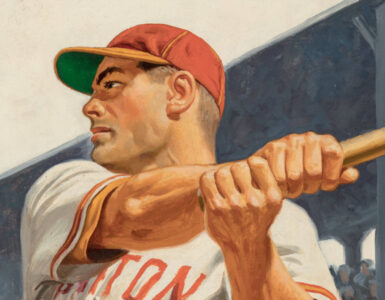 Brothers & Sisters,
Brothers & Sisters,
I’ve been asked to share some of my thoughts about why PulpFest especially merits your attention this year, and why pulp fiction and fandom remain relevant — even essential — in our frequently fraught, Modern Age.
Along with a handful of my crime-fighting peers, it was with some misgivings that I reluctantly agreed to lend my name and likeness to a series of pulp magazine adventures which in my case debuted 90 years ago this year.
In the end, Richard, Kent, and I decided such fictionalized exploits might provide instructive guidance and inspiration to American youth during a period of intense financial pressure that could and was leading too many of our friends and associates down criminal paths.
The resulting tales featuring myself and my colleagues in thinly disguised form were published by Street & Smith’s Doc Savage Magazine between 1933 and 1949, and the majority were penned by an imaginative Missourian named Lester Bernard Dent.
Mr. Dent was an inventor, sailor, aviator, farmer, but most of all, a highly imaginative author. Dent’s heavily fictionalized tales of “Doc Savage” were published under the Street & Smith “house” non-de-plume of Kenneth Robeson.
Across intervening decades, fans of these adventures have toiled to construct complex chronologies of “my” exploits. While I appreciate their loyal devotion and applaud the benign imagination expended on these efforts, let me stress that Dent’s tales were frequently the product of his own rarest imagination.
For the record, I have never — and would never attempt — to resurrect the dead. In our myriad travels, my colleagues and I have only encountered one nest of surviving prehistoric creatures.
Indeed, my increasing misgivings related to the wild flights of imagination exercised by Mr. Dent and his various ghost-writer associates were finally given some airing in a series of telegrams between myself and “Robeson” (Dent), and, ultimately, a rare statement — again quite reluctantly — that I consented to be reproduced.
These thoughts appeared in Doc Savage magazine in a tale titled, “No Light To Die By,” published in 1947. In that long-ago year, the world was still reeling from its latest global conflict and I touched on such in that statement.
There is one passage from that piece I will share again, as I think it speaks to the subject about which I’ve been asked to share my thoughts — in essence, why these increasingly frail pulp magazines and their contents still hold meaning and value in our fast-changing world.
 In 1947 I wrote, “Changes always breed fear, and that is good, because a change is a dangerous thing, not to be avoided, but to be approached warily. And any kind of change that destroys is particularly vicious. Destruction, like death, is so permanent. And the professional wreckers of houses are almost never the men who build homes.”
In 1947 I wrote, “Changes always breed fear, and that is good, because a change is a dangerous thing, not to be avoided, but to be approached warily. And any kind of change that destroys is particularly vicious. Destruction, like death, is so permanent. And the professional wreckers of houses are almost never the men who build homes.”
Why is our enduring pulp fandom relevant? Why PulpFest?
Because tales of heroes always matter and kindness remains the only proven glue to hold our society together. Because even dusty and heavily fictionalized foot soldiers like myself in eternal pursuit of justice-for-all may still provide inspiration in this world too often poisoned by incivility, by narcissistic and huckster “influencers,” and cynical, even nihilistic elected officials.
Heroes will always matter. Stories will always matter, and in fact, bind us in essential fellowship.
I leave you with a personal code that Street & Smith got right, if not quite in actual wording, then certainly in sentiment and central messaging:
“Let us strive every moment of our lives to make ourselves better and better to the best of our ability, so that all may profit by it. Let us think of the right, and lend our assistance to all who may need it, with no regard for anything but justice. Let us take what comes with a smile, without loss of courage. Let us be considerate of our country, our fellow citizens, and our associates, in everything we say and do. Let us do right to all, and wrong no one.”

If schedules permit, I hope to at least discretely roam the sales room in Mars, Pennsylvania this August, happy amongst those who come to share in these undying tales and the fellowship brought us through pulp culture; all of us united in our passion for heroes, for exciting locales, and for the opportunity to revel in larger-than-life tales, enthusiastically told.
Because pulp fiction still resonates and offers communion, as this cherished annual gathering attests. But most of all, because we still desperately demand our heroes and legends.
With warmest personal regards,
CLARK SAVAGE, JR.
Our featured image is excerpted from Walter Baumhofer’s cover art for the April 1933 issue of Doc Savage Magazine. Lester Dent’s “The Land of Terror,” the issue’s lead story, may have been the one time that Doc Savage and his colleagues encountered a “nest of surviving prehistoric creatures.”
The Empire State Building clipart is excerpted from the letterhead of the missive received by PulpFest.
Dr. Savage’s thoughts about change appeared in Lester Dent’s story, “No Light To Die By,” published in the May-June 1947 issue of Doc Savage, edited by Babette Rosmond and published by Street & Smith. It is believed that the cover art is by Walter Swenson.
If you would care to see a facsimile of Dr. Savage’s original letter as received by PulpFest, click the link embedded in the words above, “Why PulpFest?” The return address on the original letter reads: “Hidalgo Trading Company, Inc., 86th Floor, Empire State, 350 Fifth Avenue, Manhattan, N.Y. 10118. Needless to say, we were ecstatic that Dr. Savage managed to find the time in his still-busy schedule to answer our question, “Why PulpFest?”







